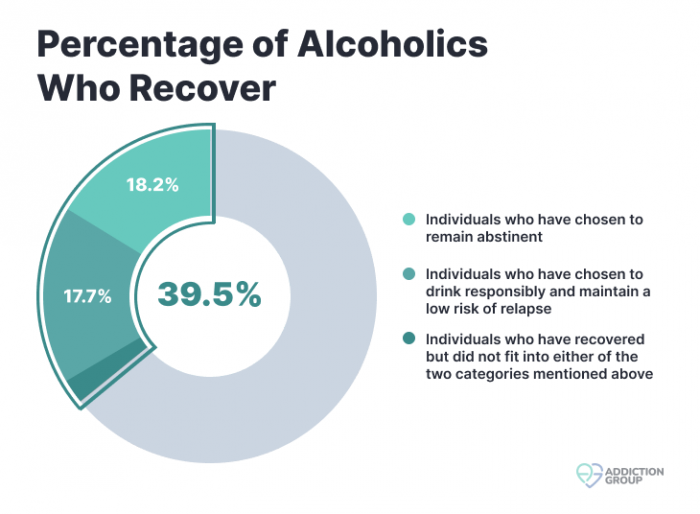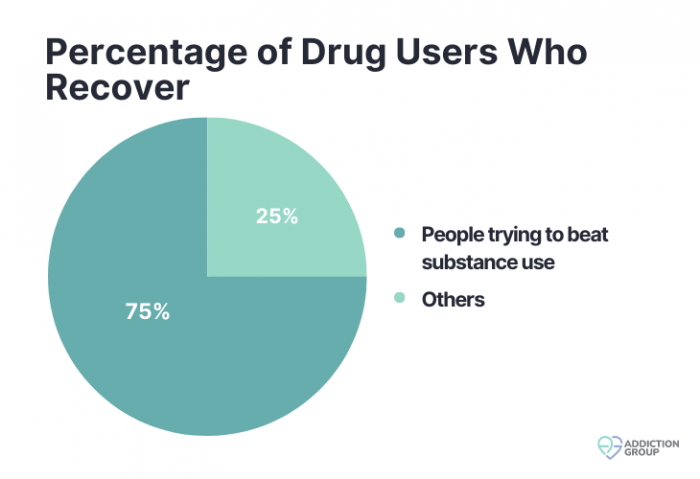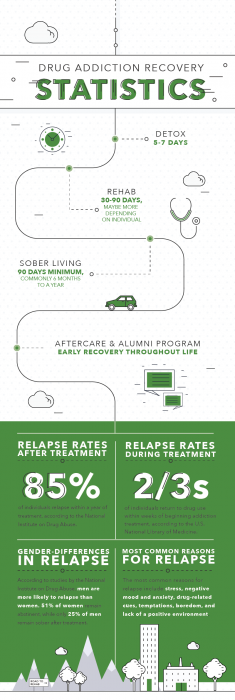Substance use disorder (SUD) is a struggle many face, and recovery is a process that demands commitment, perseverance, and a genuine desire for change. It can be challenging for loved ones and caregivers to discern whether someone’s commitment to recovery is genuine. Here are some indicators that suggest a person with a substance use disorder is sincerely on the path to healing:
1. Consistent Commitment to Treatment: One of the most telling signs is an unwavering dedication to their recovery program, whether attending therapy sessions, group meetings, or following prescribed treatments without fail.
2. Avoidance of Triggers: Genuine recovery involves recognizing and consciously avoiding situations, places, or people that might trigger a relapse. A committed individual will actively work to steer clear of these triggers.
3. Active Seeker of Support: A serious commitment to recovery often means leaning on others. This could be attending support groups, seeking a mentor or sponsor, or actively engaging with loved ones about their journey.
4. Acknowledgment of Past Mistakes: Acceptance and acknowledgment of past mistakes, without defensiveness, is a positive sign. It shows that the individual is gaining self-awareness and is ready to move forward without repeating past errors.
5. Tangible Behavioral Changes: Beyond words, their actions will show change. This could mean mending broken relationships, making amends, demonstrating responsibility, and showing a consistent pattern of improved behavior.
6. Setting Boundaries: A person in recovery who is serious about their journey will set and communicate clear boundaries, whether abstaining from certain social situations or avoiding specific substances.
7. Forward Thinking: Planning for the future, setting goals (both short-term and long-term), and working towards them can indicate a genuine commitment to a new life beyond addiction.
While every individual’s recovery journey is unique, these signs can provide insight into their genuine commitment to the process. Approach the situation with empathy, understanding, and an open mind, recognizing that recovery is a process with its own set of challenges. Supporting a loved one through it can make all the difference.
Can a Person Recover from Substance Use Disorder?
This a question fraught with anxiety, uncertainty, and hope. If you’re asking it, know that you’re not alone and that the answer is often more uplifting than you might think.
First, clarifying what “success” means when treating addiction or substance use disorder is crucial. Success doesn’t mean complete abstinence forever. For some, it might mean reducing usage to manage symptoms better, improving overall health, or regaining control over one’s life. It’s a personal journey, and what counts as success varies from individual to individual.
While success rates can vary depending on the type of substance involved and the form of treatment pursued, research does show promise. According to the Butler Center for Research at Hazelden Betty Ford Foundation, nearly 90% of people who entered a treatment program reported staying drug free 12 months post-rehab.
Statistics show that roughly 75% of people with a substance problem have “reported being in recovery. Reporting lower prevalence of using substances in the past year and having received treatment for their substance use problem were associated with being in recovery.”
Can you really turn the page and start a new chapter? Spoiler alert: Yes, you can.


Steps to Recovery from Substance Use Disorder
The path to recovery from substance use disorders is often nonlinear and varies from person to person. However, some common steps can provide a roadmap. Here they are:
- Acknowledgement: Recognizing the problem and admitting that professional help is needed.
- Seeking Professional Assessment: Consulting with health care providers for a complete evaluation often includes physical exams, psychological assessments, and substance use history.
- Detoxification (Detox): Safely withdrawing from the substance, often under medical supervision, to manage withdrawal symptoms.
- Choosing a Treatment Plan: Based on professional assessments, decide on a treatment plan that could include inpatient rehab, outpatient therapy, or medication-assisted treatment.
- Active Treatment: Engaging in the treatment process, which often includes behavioral therapy, counseling, and possibly medications to help manage symptoms and cravings.
- Skill-Building: Learning new coping mechanisms, life skills, and ways to manage triggers and cravings.
- Social Support and Community: Leaning on supportive friends and family and possibly engaging in group therapy or support groups like Alcoholics Anonymous or SMART Recovery.
- Long-Term Maintenance: Ongoing treatment, which may include regular check-ups with health care providers, continued therapy, and possibly maintenance medication.
- Relapse Prevention: Develop strategies to prevent relapse, including recognizing early warning signs and having a plan to deal with situations that may trigger a relapse.
- Continuous Growth and Self-Care: Focusing on overall well-being, which includes physical health, mental health, and continued growth in personal and professional life.
Remember, the journey to recovery often involves setbacks — but that’s OK. It’s part of the process. Each step, no matter how small, is a move toward a life that doesn’t revolve around substance use. The road may be long and fraught with challenges, but each milestone is worth celebrating. Keep walking; you’re not alone.
Detoxification and Withdrawal
Detoxification, or detox as commonly known, is often the initial, critical stage of the recovery journey. But what does it involve, and why does it feel so daunting? You might even wonder, “Can’t I just skip it?” Well, let’s explore why this step is necessary and transformative.
What Is Detoxification?
Detoxification is the process of allowing the body to remove the toxins accumulated through substance use. This is often the first medical intervention in a comprehensive treatment plan. The ultimate goal is to safely manage withdrawal symptoms, which can be uncomfortable and sometimes life-threatening.
Types of Detox
There are typically two types of detox:
- Medical Detox: Performed under medical supervision, this often involves medication to manage withdrawal symptoms.
- Social or “Cold Turkey” Detox: Though less advisable, some people detox without medical help. This can be risky and is generally not recommended.
What to Expect During Withdrawal
Withdrawal symptoms vary depending on the substance, how long someone uses it, and their general physical condition. Symptoms can range from mild (e.g., anxiety, nausea) to severe (e.g., seizures, hallucinations). Medical supervision is often recommended because it can make the process less agonizing and safer.
Duration of the Detox Process
The length of detox can vary depending on several factors, including the substance involved and the individual’s health status. It’s essential to know that detox is not a one-size-fits-all process, and a health care provider can give you a more tailored timeline.
Coping Mechanisms
Some coping strategies can make the detox process more bearable. Deep breathing exercises, simple stretches, and distractions like listening to music or watching uplifting shows can be helpful. However, always consult with your health care provider for appropriate coping mechanisms for your condition.
Importance of a Support System
A strong support system can make a significant difference in detox. Family, friends, and online communities can offer emotional support and encouragement to keep you focused and committed.
Potential Risks and Complications
While detox is generally beneficial for long-term recovery, it’s essential to be aware of potential risks and complications, especially for those who try to detox without medical supervision. Complications can include dehydration, electrolyte imbalance, and, in severe cases, even death.
The Emotional Rollercoaster
We can’t talk about detox without mentioning the emotional aspect. It’s a time of heightened emotions. You may feel relieved one moment and overwhelmed the next. It’s like an emotional rollercoaster, but remember, it’s all part of the process.
After Detox — What Next?
Detox is just the first step, not a cure. The real work often begins after this. It’s crucial to transition into a structured treatment program, which usually involves a combination of medication, counseling, and behavioral therapies. Skipping this step could set you up for relapse.
Detoxification can be challenging, but it’s a step toward reclaiming your life. It’s the first act of taking back control, a form of self-care that propels you toward the life you envision for yourself. Trust the process, and remember, you’re stronger than you think. Understanding the what, why, and how makes the doing part easier.
Treatments for Substance Use Disorder: A Multi-Faceted Approach to Recovery
Treatment for substance use disorders isn’t a one-size-fits-all endeavor. Multiple avenues are available, and often, a combination of approaches yields the best results. You might wonder, “Which treatment option is best for me?” Let’s explore the variety of treatments to help you or your loved one tailor a plan that fits individual needs and lifestyles.
Inpatient Rehabilitation
What it involves: Inpatient rehab, often referred to simply as “rehab,” requires patients to live in a treatment facility for an extended period, usually 30 to 90 days or longer.
Why it’s beneficial: This approach provides a structured environment that eliminates distractions and triggers, focusing solely on recovery. It often includes medical detox, therapy sessions, group meetings, and skill-building activities.
Outpatient Programs
What it involves: In outpatient treatment, individuals attend therapy and treatment sessions while continuing to live at home. The frequency of these sessions can vary.
Why it’s beneficial: This approach offers greater flexibility, allowing you to maintain family responsibilities and, in some cases, even continue working. However, it requires a strong support system and self-discipline.
Medication-Assisted Treatment (MAT)
What it involves: Medication-assisted treatment combines medications with behavioral therapy. Medications like methadone, buprenorphine, and naltrexone are commonly used to treat opioid use disorders.
Why it’s beneficial: MAT can help manage cravings, stabilize mood, and reduce withdrawal symptoms, making it easier to focus on recovery.
Cognitive-Behavioral Therapy (CBT)
What it involves: This form of psychotherapy helps identify negative thought patterns and behaviors, teaching them to replace these with healthier alternatives.
Why it’s beneficial: CBT provides practical skills to manage stress, triggers, and cravings, which can reduce the risk of relapse.
Motivational Interviewing
What it involves: A therapeutic approach designed to empower people to change by helping them articulate their own reasons for change and plan for achieving it.
Why it’s beneficial: It focuses on internal motivation, making the change seem less imposed and more personally fulfilling.
12-Step Programs
What it involves: Programs like Alcoholics Anonymous (AA) and Narcotics Anonymous (NA) offer a structured step-by-step approach to recovery.
Why it’s beneficial: These programs offer strong community support, helping you feel less isolated.
Holistic Approaches
What it involves: Techniques like yoga, meditation, and acupuncture are integrated into the treatment program.
Why it’s beneficial: These practices can improve mental well-being, stress management, and overall quality of life, providing a well-rounded approach to recovery.
It’s essential to work closely with health care providers to design a treatment plan that’s both effective and sustainable. The good news? There are multiple paths to recovery, each offering unique tools to help you regain control of your life. You’re not locked into a single method; you have choices. And every choice made towards recovery is a step forward, a victory to be celebrated.
Building a Support System
If recovery were a team sport, a support system would be your all-star lineup. But who makes up this team, and how can you assemble it? The notion of asking for help may feel intimidating, even stigmatizing. Yet, this is your community, the people who cheer you on from the sidelines and jump in to help you.
Family and Friends
What it involves: Engaging your close circle — your family and trusted friends — as allies in your journey.
Why it’s beneficial: These people know you best and often have a vested emotional interest in your well-being. Their support can range from emotional encouragement to practical help, like accompanying you to appointments.
Tips: Communicating openly with your family and friends about what kind of support you need is crucial. Remember that not everyone will understand your journey, and that’s OK. Focus on those who do.
Support Groups
What it involves: Regularly attending group meetings, whether affiliated with a specific treatment method like 12-step programs or not.
Why it’s beneficial: Being part of a group going through similar experiences can provide emotional relief and valuable insights.
Tips: Choose a group that resonates with you. Finding the right fit might take a couple of tries, but once you do, it can be incredibly empowering.
Community Resources
What it involves: Leveraging local resources such as community centers, religious organizations, or neighborhood initiatives that offer support services.
Why it’s beneficial: These organizations often provide resources ranging from free therapy sessions to job placement assistance for those in recovery.
Tips: Don’t hesitate to ask around or search online for these resources in your community. Many are underutilized simply because people don’t know they exist.
Online Support
What it involves: Participating in online forums, social media groups, or virtual meetings focusing on addiction and recovery.
Why it’s beneficial: Online support offers the advantage of anonymity and 24/7 availability, which can be particularly helpful during moments of crisis.
Tips: While online support can be valuable, it should differ from real-world connections. Make sure you have a balanced support system.
Building your support system is dynamic; it will evolve as you progress in your recovery. Remember, the aim is not to go it alone but to enrich your journey with connections that bring you strength, wisdom, and plenty of cheers from the sidelines. You’re not just assembling a team; you’re creating a community that will be with you every step of the way.
What Holds People Back from Seeking Treatment for Substance Use Disorder?
Taking the step to seek help for SUD is monumental, but let’s be honest — it’s also daunting. Many are on the edge of this critical decision, only to retreat. So, what holds us back from walking through that door to recovery? Various factors come into play, some more obvious than others.
- Stigma and shame: Fear of social judgment or being ostracized.
- Denial or minimization: Failing to recognize the severity of the issue.
- Financial constraints: Concerns about the cost of treatment.
- Lack of support: Absence of a supportive network of friends and family.
- Fear of consequences: Worries about job loss, legal issues, or other ramifications.
- Lack of information or resources: Uncertainty about where to seek help or how to start the recovery process.
- Fear of withdrawal or treatment: Anxiety about the discomfort or challenges of the recovery process.
Each of these barriers presents its own challenge, but understanding what might hold you or a loved one back is the first step toward overcoming these obstacles.
Recovery from addiction has its ups and downs, twists and turns, victories and setbacks. No matter how small, each step taken is a step forward in the journey toward sobriety. The important thing is that it’s a process requiring ongoing commitment. The road may be long, but each day you choose sobriety is a triumph.
No matter how far down the path of substance use one has gone, it’s always possible to turn back. There’s an inherent hope and promise in recovery. From reconnecting with loved ones to regaining a sense of purpose and self-worth, the rewards of recovery are immeasurable and life-altering. In the face of overwhelming adversity, humans can adapt, grow, and find strength they never knew they had. That’s not just optimism; that’s the reality we’ve witnessed time and time again in countless recovery stories.
Getty image by urbazon


